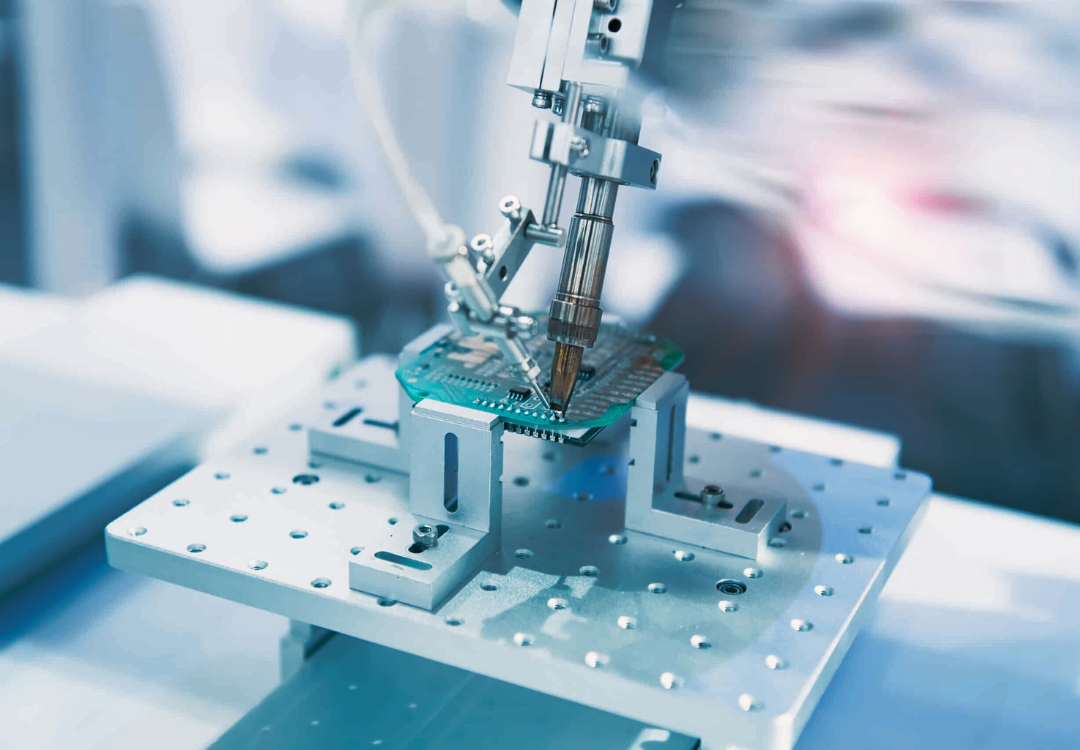U.S. Patent Office fast-tracks semiconductor patent examination

Not only India, but the United States of America is also taking measures to get ahead in technology research, and development in the semiconductor sector. The U.S. Patent and Trademark Office (USPTO) of the Commerce Department has introduced a new Semiconductor Technology Pilot Program designed to assist the CHIPS for America initiative. The program's goal is to promote research, development, and innovation in semiconductor manufacturing by accelerating the review of eligible utility patent applications.
The semiconductor industry is highly competitive, with countries aiming to establish or maintain leadership in technology and innovation. The U.S., China, South Korea, Taiwan, India, and other nations are actively participating in this global competition to secure a strategic position in the semiconductor landscape. This new move by the USPTO will give a boost to American innovations in semiconductor technology on the global landscape. This will help the U.S. maintain its competitive edge in the industry.
In the USPTO 's official press release, Secretary of Commerce Gina Raimondo stated, "The CHIPS and Science Act is a once-in-a-generation opportunity to foster a new wave of American innovation, protect our national security, and preserve our global economic competitiveness." "With the help of this new USPTO program, we can make sure that important intellectual property rights are given top priority and that investments in domestic semiconductor manufacturing are encouraged."
By speeding up the review of patent applications for specific advancements in semiconductor manufacturing, the pilot program aims to advance advancements in the semiconductor sector. Applications for qualifying non-provisional utility patents on specific tools and methods used to make semiconductor devices will be sent one at a time for investigation (with special treatment) until the first action is taken. To be eligible, applicants do not need to meet the standards of either the priority or accelerated examination programs.
According to Kathi Vidal, Under Secretary of Commerce for Intellectual Property and Director of the USPTO, "fast tracking examination of patent applications related to semiconductor device manufacturing speeds up bringing key innovations to market and strengthens our nation's supply chain." "Our goal with this program is to get more cutting-edge technologies into the hands of consumers faster while reducing our dependence on the foreign supply of semiconductor chips, from innovations in phones to cars to other everyday devices."
This pilot program started on December 1, 2023. The trial program will run until December 2, 2024, or until the USPTO receives 1,000 grantable petitions, whichever comes first.
However, there is a catch in this program. Every year, the USPTO gets tens of thousands of semiconductor patent applications. The 1,000 limit will be reached soon, so there may be a chance for the USPTO to extend this program. This could provide additional opportunities for innovators to secure funding and support for their patent applications.
"First Office Action" refers to the initial formal communication from a patent office regarding a patent application. It is a key step in the patent examination process, during which a patent examiner reviews the application to determine whether the invention meets the requirements for patentability. The specific procedures and terminology may vary slightly depending on the country's patent system, but the general concept remains consistent.
What typically happens during the first office action?
- Examination: After a patent application is filed, it undergoes examination by a patent examiner. The examiner reviews the application to ensure that it complies with the legal requirements for patentability, such as novelty, inventive step (non-obviousness), and industrial applicability.
- First Office Action Issued: Once the examiner completes the initial review, a formal document known as the "First Office Action" is issued. This document outlines the examiner's findings and may include various elements:
- Allowance: If the examiner finds that the invention meets all the patentability requirements, they may issue an allowance, indicating that the patent application is allowed to proceed with a grant.
- Rejection: If the examiner identifies issues with the application, such as a lack of novelty or obviousness, they may issue a rejection. The rejection will provide reasons for the refusal and cite relevant prior art.
- Applicant's Response: In response to the First Office Action, the patent applicant can address any issues raised by the examiner. If the application is rejected, the applicant can amend the claims, provide arguments, or submit additional evidence to overcome the rejection.
- Further Examination: After receiving the applicant's response, the examiner conducts a further review. This may result in additional office actions if further clarification or amendments are needed.
- Final Office Action: If the applicant's response does not fully address the examiner's concerns, a Final Office Action may be issued. This is a subsequent communication indicating that the examiner maintains the rejection. However, applicants still have options, such as filing an appeal or continuing to work with the examiner to address outstanding issues.
It's important to note that the procedures and terminology can vary between different patent offices, such as the United States Patent and Trademark Office (USPTO), the European Patent Office (EPO), the Indian Patent Office, and others. Applicants and their patent agents or attorneys typically work closely with the patent office during this process to navigate through the examination and address any issues raised in the first office action. With more than a decade of experience, Einfolge Technologies can help you at all stages of the technology market research and patent application process.